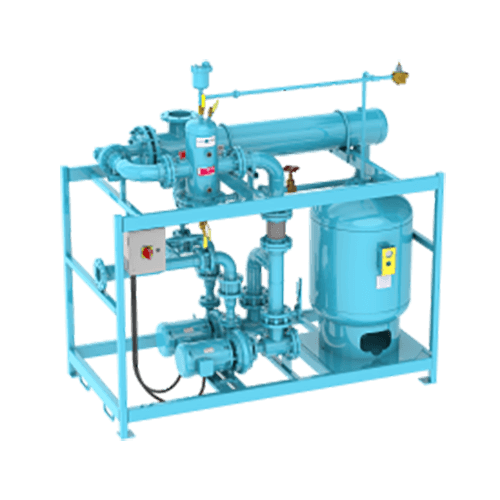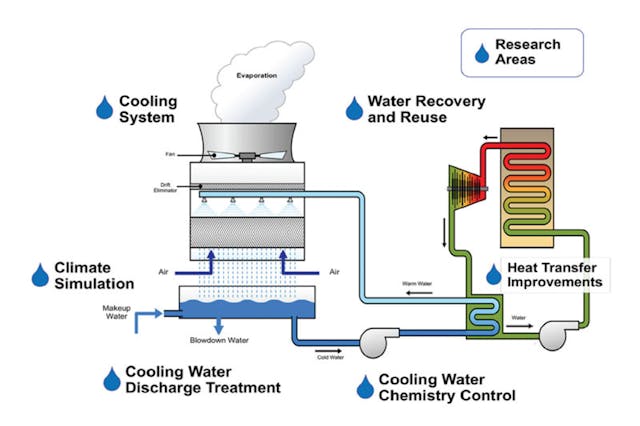Innovations in Heat Transfer Systems: What You Need to Know for Optimum Performance
Innovations in Heat transfer systems are changing performance throughout different sectors. Advanced materials like graphene and nanofluids promise substantial improvements in thermal conductivity. Meanwhile, the combination of IoT and maker learning supplies opportunities for real-time surveillance and improved energy effectiveness. The landscape of thermal administration is quickly developing. Comprehending these advancements is important for accomplishing suitable system performance and sustainability in the future. What certain innovations are forming this makeover?
Emerging Products for Boosted Heat Transfer

Advanced Heat Exchanger Designs
While typical Heat exchangers have actually served their function in numerous applications, advanced layouts are now emerging to meet the increasing needs for performance and efficiency. These ingenious designs, such as plate, shell-and-tube, and finned-tube Heat exchangers, include improved surface and enhanced flow patterns to raise thermal transfer prices. On top of that, portable layouts enable reduced room needs without endangering performance. Advanced materials, such as composites and corrosion-resistant alloys, in addition improve durability and efficiency under severe problems. In addition, simulation modern technologies and computational liquid dynamics are increasingly employed to fine-tune these designs, ensuring peak Heat transfer attributes. As markets seek to decrease power usage and make the most of result, the adoption of sophisticated Heat exchanger designs is essential in attaining these goals.
The Duty of Nanotechnology in Heat Transfer
Nanotechnology plays an important function in boosting thermal conductivity within Heat transfer systems. By adjusting products at the nanoscale, researchers have actually accomplished significant renovations in energy efficiency. These improvements not just optimize performance yet also contribute to even more sustainable energy remedies.
Improved Thermal Conductivity
Significant advancements in thermal conductivity have emerged with the application of nanotechnology, changing Heat transfer systems across numerous sectors. By including nanoparticles into Heat transfer liquids and materials, scientists have achieved exceptional increases in thermal conductivity. These nanoparticles, such as carbon nanotubes, graphene, and metal oxides, boost the Heat transfer properties as a result of their high surface and distinct thermal attributes. The resulting composites display boosted performance in applications ranging from electronics cooling systems to renewable resource modern technologies. The capacity to customize the size, shape, and composition of nanoparticles enables for enhanced thermal administration services. As an outcome, nanotechnology proceeds to play a crucial duty in the advancement of much more efficient and effective Heat transfer systems, leading the way for boosted industrial applications.
Energy Performance Improvements

Integration of IoT in Heat Transfer Equipments
The combination of IoT in Heat transfer systems introduces the execution of clever sensing units that improve operational effectiveness. These sensing units make it possible for real-time data tracking, permitting immediate adjustments and optimizations. This technical innovation has the prospective to considerably improve performance and power administration in Heat transfer applications.
Smart Sensors Implementation
As Heat transfer systems advance, the combination of clever sensing units through the Internet of Things (IoT) has become a transformative method. These sensing units enable real-time monitoring of circulation, pressure, and temperature prices, boosting system effectiveness and reliability. By collecting and transferring information, they promote proactive maintenance, lowering the risk of system failings. Furthermore, smart sensing units add to power savings by refining functional parameters based on environmental conditions. Their capacity to analyze trends and anomalies permits notified decision-making, making certain peak efficiency of Heat transfer systems. As sectors progressively embrace this innovation, the implementation of smart sensing units stands to change just how Heat transfer systems are managed, leading the method for better sustainability and enhanced performance outcomes.
Real-Time Information Surveillance
How can real-time information keeping an eye on enhance the navigate to this website efficiency of Heat transfer systems? By incorporating Internet of Points (IoT) modern technology, Heat transfer systems can leverage continuous data collection from wise sensors. This real-time tracking permits immediate evaluation of circulation, stress, and temperature level prices, making it possible for drivers to recognize inadequacies promptly. Subsequently, changes can be made to optimize efficiency, minimize energy usage, and prolong devices life expectancy. In addition, anticipating upkeep can be executed, minimizing unforeseen downtime and pricey repair work. The capacity to visualize efficiency metrics via control panels improves decision-making, fostering a proactive method to system management. Inevitably, real-time information checking not only improves operational efficiency however additionally adds to sustainability goals within commercial processes.
Power Effectiveness and Sustainability Trends
Energy efficiency and sustainability trends are reshaping the landscape of Heat transfer systems, driving development and compliance across different markets. Organizations are progressively focusing on energy-efficient styles to decrease operational expenses and minimize environmental influences. The integration of renewable resource sources is becoming much more widespread, making it possible for Heat transfer systems to run sustainably while fulfilling regulative demands. Furthermore, improvements in innovations and materials promote reduced energy usage and improve general performance. Lifecycle assessments are additionally obtaining traction, allowing firms to assess the ecological impact of Heat transfer systems from manufacturing to disposal. This concentrate on sustainability not only sustains corporate duty however additionally settings organizations competitively in a market where consumers significantly favor eco-friendly remedies. Power effectiveness and sustainability remain critical factors to consider for future developments in Heat transfer innovation.
Developments in Thermal Management Solutions
While the demand for reliable Heat transfer continues to increase, advancements in thermal administration remedies are arising to address both performance and sustainability challenges. Advanced materials, such as phase adjustment products and nanofluids, are being established to boost Heat transfer efficiency - DVS Heat Transfer Systems. These materials enhance thermal conductivity and enable for better temperature law in various applications. In addition, technologies like active thermal control systems are getting grip, making it possible for real-time adjustments to take care of Heat circulation properly. These systems add to power savings and lower the ecological impact of thermal processes. Additionally, the assimilation of IoT in thermal administration promotes tracking and anticipating maintenance, guaranteeing optimized efficiency and longevity of Heat transfer systems. In general, these developments represent substantial strides toward even more sustainable thermal administration methods
Future Instructions in Heat Transfer Technology
Arising developments in thermal management services signify a promising future for Heat transfer innovation. Scientists are significantly concentrating on establishing materials with remarkable thermal conductivity and boosted power efficiency. Developments such as nanofluids, which include put on hold nanoparticles, provide substantial enhancements in Heat transfer efficiency. In addition, the assimilation of smart materials that adapt to varying temperature level conditions is obtaining grip, enabling for even more receptive and efficient systems. The rise of additive manufacturing methods is also making it possible for the layout of intricate Heat exchanger geometries that maximize liquid flow. The execution of maker discovering algorithms is expected to reinvent the optimization of Heat transfer systems, helping with predictive maintenance and performance enhancement. Collectively, these improvements are positioned to change the landscape of Heat transfer modern technologies in different sectors.

Regularly Asked Concerns

Exactly how Do I Select the Right Heat Transfer System for My Application?
Choosing the ideal Heat transfer system entails evaluating application demands, consisting of temperature arrays, liquid residential properties, and performance requirements. Assessing system kinds, maintenance factors to consider, and cost-effectiveness also plays a vital role in making an informed choice.
What Are the Maintenance Demands for Advanced Heat Exchangers?
Upkeep requirements for advanced Heat exchangers normally include regular assessments, checking for leakages, cleaning of surfaces, and ensuring perfect circulation rates. Adhering to producer guidelines assurances reliable operation and prolongs the tools's life-span.
Just How Do Ecological Variables Affect Heat Transfer Efficiency?
Ecological aspects significantly influence Heat transfer efficiency. Variations in airflow, moisture, and temperature level effect thermal conductivity and convective Heat transfer, ultimately impacting system performance and necessitating factor to consider throughout the layout and operation of Heat transfer systems.
What Security Specifications Relate To Heat Transfer Solutions?
Security requirements for Heat transfer systems typically include standards from companies such as ASME and ASTM. DVS Heat Transfer Systems. These standards Discover More address products, layout, and functional techniques to assure integrity, effectiveness, and defense versus dangers in various applications
Just How Can I Repair Common Heat Transfer System Issues?
Fixing usual Heat transfer system concerns involves examining for leakages, guaranteeing correct liquid flow, checking insulation stability, and verifying temperature level differentials. Determining these elements can aid preserve system efficiency and avoid additional issues.
Nanotechnology plays an essential role in enhancing thermal conductivity see this website within Heat transfer systems. Substantial innovations in thermal conductivity have actually arised through the application of nanotechnology, changing Heat transfer systems throughout numerous industries. Improvements in thermal conductivity through nanotechnology have led the method for impressive improvements in power performance within Heat transfer systems. Energy effectiveness and sustainability trends are reshaping the landscape of Heat transfer systems, driving development and conformity across different markets. The assimilation of IoT in thermal monitoring assists in tracking and anticipating upkeep, making sure maximized performance and longevity of Heat transfer systems.